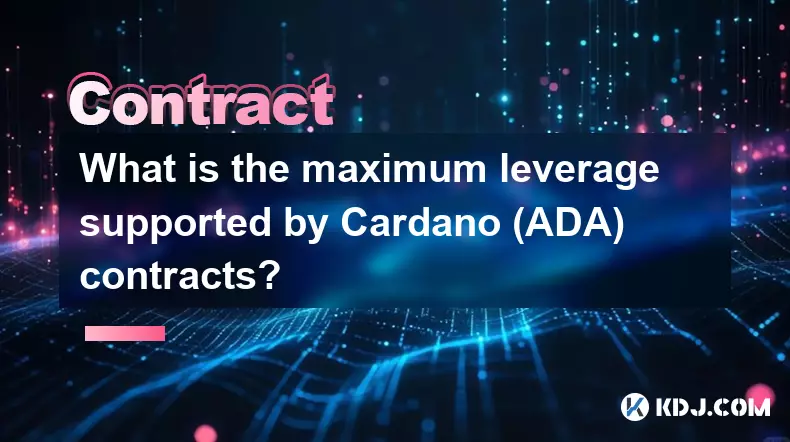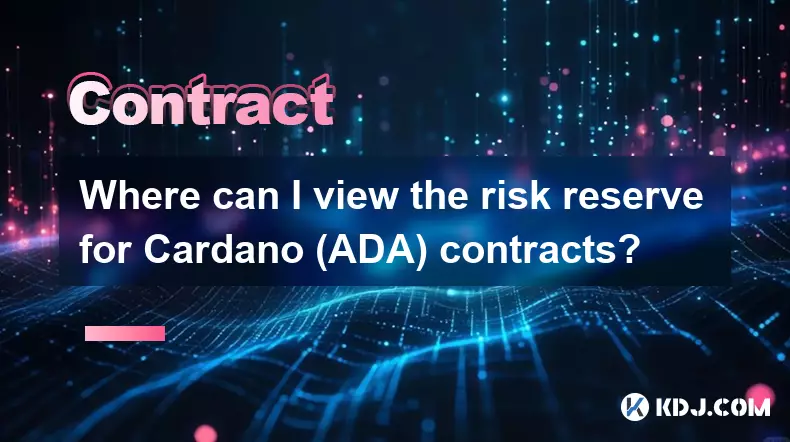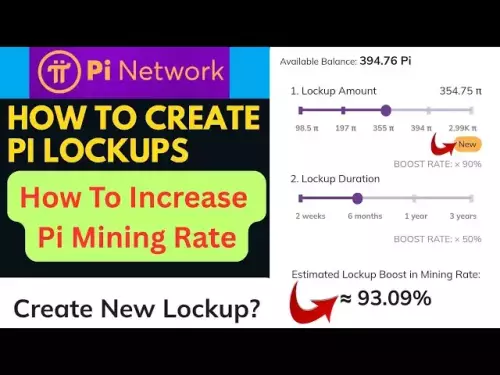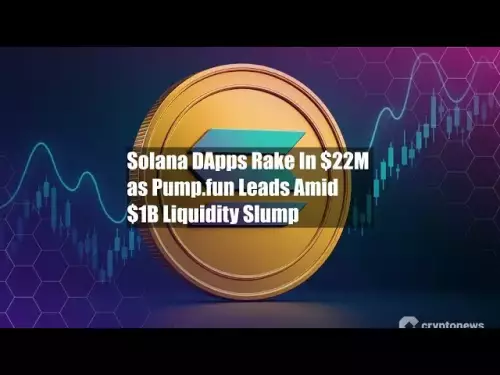-
 bitcoin
bitcoin $114779.865156 USD
2.30% -
 ethereum
ethereum $4226.519789 USD
2.39% -
 tether
tether $1.000545 USD
0.04% -
 xrp
xrp $2.890223 USD
0.92% -
 bnb
bnb $1030.029301 USD
2.95% -
 solana
solana $212.824944 USD
1.69% -
 usd-coin
usd-coin $0.999757 USD
0.01% -
 dogecoin
dogecoin $0.234961 USD
-0.27% -
 tron
tron $0.337174 USD
0.42% -
 cardano
cardano $0.804783 USD
0.09% -
 hyperliquid
hyperliquid $45.748770 USD
-2.85% -
 chainlink
chainlink $21.699170 USD
0.82% -
 ethena-usde
ethena-usde $1.001452 USD
0.08% -
 avalanche
avalanche $30.237800 USD
1.14% -
 stellar
stellar $0.372604 USD
1.52%
Where can I view the risk reserve for TRON (TRX) contracts?
TRON lacks a centralized risk reserve, so users should verify smart contract safety through audits, transparent code, and community reviews.
Sep 24, 2025 at 12:36 am

Understanding the TRON Network and Smart Contract Ecosystem
1. The TRON blockchain operates as a decentralized platform designed to support high-throughput smart contracts and decentralized applications (dApps). Its architecture prioritizes scalability and low transaction costs, making it a popular choice among developers and users in the cryptocurrency space. As with any blockchain hosting smart contracts, understanding financial safeguards like risk reserves is crucial for assessing stability and security.
2. Unlike some other blockchains that maintain publicly disclosed risk funds or insurance pools, TRON does not officially operate a centralized risk reserve fund specifically designated for compensating losses from smart contract failures. Instead, the network relies on its consensus mechanism, developer accountability, and community-driven audits to mitigate risks associated with dApp deployment and usage.
3. Users interacting with TRON-based contracts should focus on verifying the legitimacy of projects through independent audits, code transparency, and community reputation. Many TRC-20 token issuers and dApp developers publish audit reports from third-party firms such as PeckShield or CertiK, which can be accessed through their official websites or GitHub repositories.
Where to Check Financial Safeguards for TRON Contracts
1. Official Project Websites and Documentation: Most legitimate projects built on TRON publish detailed whitepapers and technical documentation outlining their financial models, including whether they have established contingency funds or insurance mechanisms. These details are typically found in sections labeled “Security,” “Risk Management,” or “Funds Allocation.”
2. Blockchain Explorers Like Tronscan: Tronscan (tronscan.org) allows users to inspect individual smart contracts, view transaction histories, analyze token holdings, and review contract code. While it doesn’t list a universal “risk reserve,” you can manually investigate if a project has allocated funds to specific wallet addresses intended for emergency use by examining large, static balances held in verified wallets.
3. Third-Party Audit Platforms: Services like SlowMist, Hacken, and Quantstamp provide security assessments for TRON-based contracts. Their reports often include evaluations of fund distribution strategies, including whether reserve funds have been locked or placed under multi-signature control to prevent unauthorized access.
4. Decentralized Finance (DeFi) Aggregators: Platforms tracking TRON-based DeFi protocols, such as Sun.io or JustLend, may disclose information about protocol-owned liquidity reserves or treasury funds. These are not insurance pools but serve similar functions in stabilizing operations during market volatility.
Community and Developer Accountability Measures
1. Open-source development practices are widespread within the TRON ecosystem. Developers frequently upload contract source code to public repositories, enabling peer review and verification. This transparency helps users assess how funds are managed within a contract’s logic, including any hardcoded withdrawal limits or time-locked vesting schedules.
2. Community forums such as the official TRON Discord server, Telegram groups, and Reddit threads play a significant role in disseminating information about project health. Experienced members often highlight red flags related to fund allocation or warn about suspicious changes in contract behavior.
3. Some projects implement decentralized governance models where token holders vote on fund usage, including the release of reserves during emergencies. Governance proposals are usually published on platforms like Snapshot, using TRC-20 governance tokens to facilitate decision-making.
4. Multi-signature wallets are increasingly adopted by project teams to secure treasury funds. Tools like Gnosis Safe-compatible implementations on TRON allow for transparent management of reserves, requiring multiple approvals before large transfers occur.
Frequently Asked Questions
How do I verify if a TRON smart contract has a locked reserve?Examine the contract’s source code on Tronscan. Look for functions that restrict withdrawals or utilize timelock mechanisms. Wallets holding substantial balances linked to the project should be cross-referenced with official announcements to confirm their purpose.
Are there insurance options available for TRON-based investments?Yes, certain decentralized insurance protocols like InsurAce offer coverage for assets deployed on TRON. Users can purchase policies protecting against smart contract exploits or fund loss, provided the targeted project is listed and eligible under the insurer’s criteria.
Can I track fund movements from a project’s reserve wallet?Absolutely. Using Tronscan, input the known reserve wallet address to view all incoming and outgoing transactions. Filter results by date and amount to monitor unusual activity or large disbursements that might indicate operational changes.
What role does the TRON Foundation play in managing financial risks?The TRON Foundation primarily supports infrastructure development and ecosystem growth. It does not intervene financially in individual project failures or compensate users for losses stemming from smart contract vulnerabilities.
Disclaimer:info@kdj.com
The information provided is not trading advice. kdj.com does not assume any responsibility for any investments made based on the information provided in this article. Cryptocurrencies are highly volatile and it is highly recommended that you invest with caution after thorough research!
If you believe that the content used on this website infringes your copyright, please contact us immediately (info@kdj.com) and we will delete it promptly.
- Government Shutdown, Trump Meeting, Deadlock: A New Yorker's Crypto Take
- 2025-09-30 10:45:12
- Token Securities, Stablecoins, and Synergy: A New Standard for Digital Finance in NYC
- 2025-09-30 10:25:15
- Dogecoin, Shiba Inu, and Remittix: Decoding the Crypto Hype
- 2025-09-30 10:25:15
- Bitcoin Surge: Bullish Factors and Seasonal Trends Fueling the Rally
- 2025-09-30 10:45:12
- Binance Coin Breakout: Riding the Cryptocurrency Wave
- 2025-09-30 10:50:01
- Bitcoin, Corporate Treasury, and Fintech Startups: A New Era of Finance
- 2025-09-30 10:50:01
Related knowledge

What is the maximum leverage supported by Cardano (ADA) contracts?
Sep 30,2025 at 03:37am
Understanding Leverage in ADA Derivatives Trading1. Leverage in cryptocurrency futures and perpetual contracts allows traders to control larger positi...

How do I use the scheduled order feature in Cardano (ADA) contracts?
Sep 28,2025 at 10:18pm
Understanding Scheduled Orders in Cardano Smart ContractsCardano operates on a proof-of-stakes consensus mechanism and uses the Plutus scripting langu...

Can I modify the leverage of Cardano (ADA) contracts after opening a position?
Sep 30,2025 at 08:19am
Understanding Leverage in Cardano (ADA) Futures Trading1. Leverage allows traders to control larger positions using a smaller amount of capital. In th...

Where can I view the risk reserve for Cardano (ADA) contracts?
Sep 29,2025 at 09:19pm
Risk Reserve Overview in Cardano (ADA) Ecosystem1. The concept of a risk reserve within the Cardano blockchain does not align with traditional central...

How do I enable the "scalping-only" mode for Cardano (ADA) contracts?
Sep 24,2025 at 03:19am
Understanding Scalping Strategies in Crypto Derivatives1. Scalping in cryptocurrency trading refers to executing multiple short-term trades within min...

What is the settlement time for Cardano (ADA) contracts?
Sep 28,2025 at 04:18am
Understanding Cardano's Contract Settlement Mechanism1. Cardano operates on a proof-of-stake consensus model known as Ouroboros, which fundamentally i...

What is the maximum leverage supported by Cardano (ADA) contracts?
Sep 30,2025 at 03:37am
Understanding Leverage in ADA Derivatives Trading1. Leverage in cryptocurrency futures and perpetual contracts allows traders to control larger positi...

How do I use the scheduled order feature in Cardano (ADA) contracts?
Sep 28,2025 at 10:18pm
Understanding Scheduled Orders in Cardano Smart ContractsCardano operates on a proof-of-stakes consensus mechanism and uses the Plutus scripting langu...

Can I modify the leverage of Cardano (ADA) contracts after opening a position?
Sep 30,2025 at 08:19am
Understanding Leverage in Cardano (ADA) Futures Trading1. Leverage allows traders to control larger positions using a smaller amount of capital. In th...

Where can I view the risk reserve for Cardano (ADA) contracts?
Sep 29,2025 at 09:19pm
Risk Reserve Overview in Cardano (ADA) Ecosystem1. The concept of a risk reserve within the Cardano blockchain does not align with traditional central...

How do I enable the "scalping-only" mode for Cardano (ADA) contracts?
Sep 24,2025 at 03:19am
Understanding Scalping Strategies in Crypto Derivatives1. Scalping in cryptocurrency trading refers to executing multiple short-term trades within min...

What is the settlement time for Cardano (ADA) contracts?
Sep 28,2025 at 04:18am
Understanding Cardano's Contract Settlement Mechanism1. Cardano operates on a proof-of-stake consensus model known as Ouroboros, which fundamentally i...
See all articles










































































